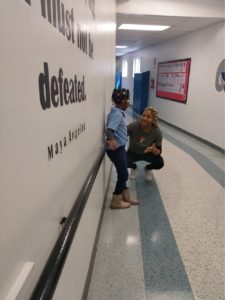As we continue to consider Black History Month in February and celebrate this Women’s History Month, I want to share some images and reflections on the intersections of race and gender in the U.S. In my DEI work, I have prioritized an intersectional approach and analysis. I learned early in my career that when we neglect to do this we overlook and often mask important data points. Despite our good intentions, we create insufficient solutions as we drive for greater equity and inclusion. What we call the gender pay gap is one of the best examples of how ignoring intersectionality can result in uneven progress.

The general narrative is that women make about seventy-five cents on the male dollar, however, this is only accurate when comparing white women and white men. When race is considered, the picture becomes both clearer and more complex.

The Literacy Lab’s work of ensuring that low-income, young people of color have robust, evidence-based literacy instruction, plays a central and significant role in this conversation, and in changing this paradigm. The ability to increase earning potential and, ideally, wealth is directly connected to educational attainment. We believe literacy, particularly setting a strong foundation in the early grades, is central to educational attainment. Therefore, literacy is at the heart of equity.

There is much to do, and at The Literacy Lab, we are working hard to do it. Through our work we hope to bring about greater educational, racial, and economic equity. As we pursue our mission, we will center these types of intersectional analyses and put a systemic DEI framework at the heart of what we do, how we do it, where we do it and with whom. We will be clear, compelling and courageous in our commitment to students, schools, families and communities.
In service and partnership,